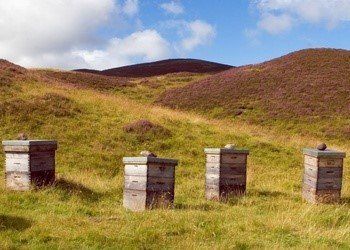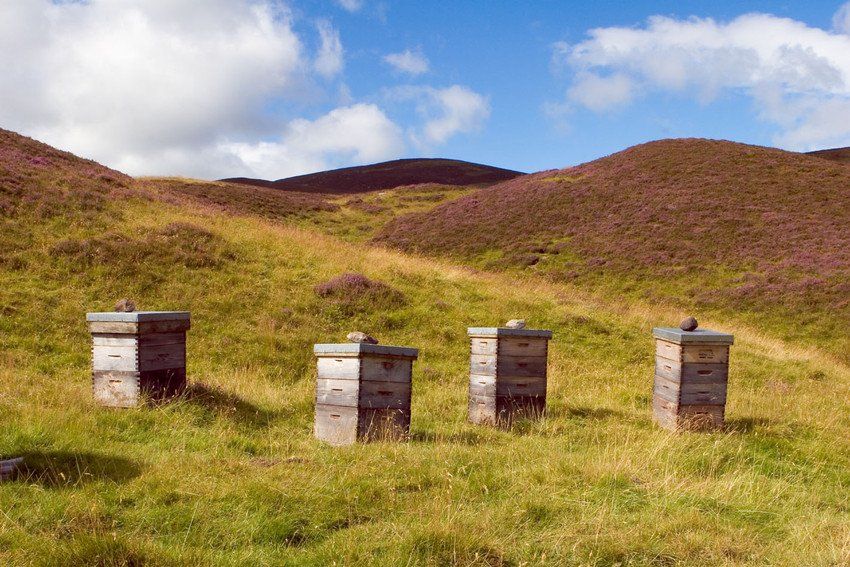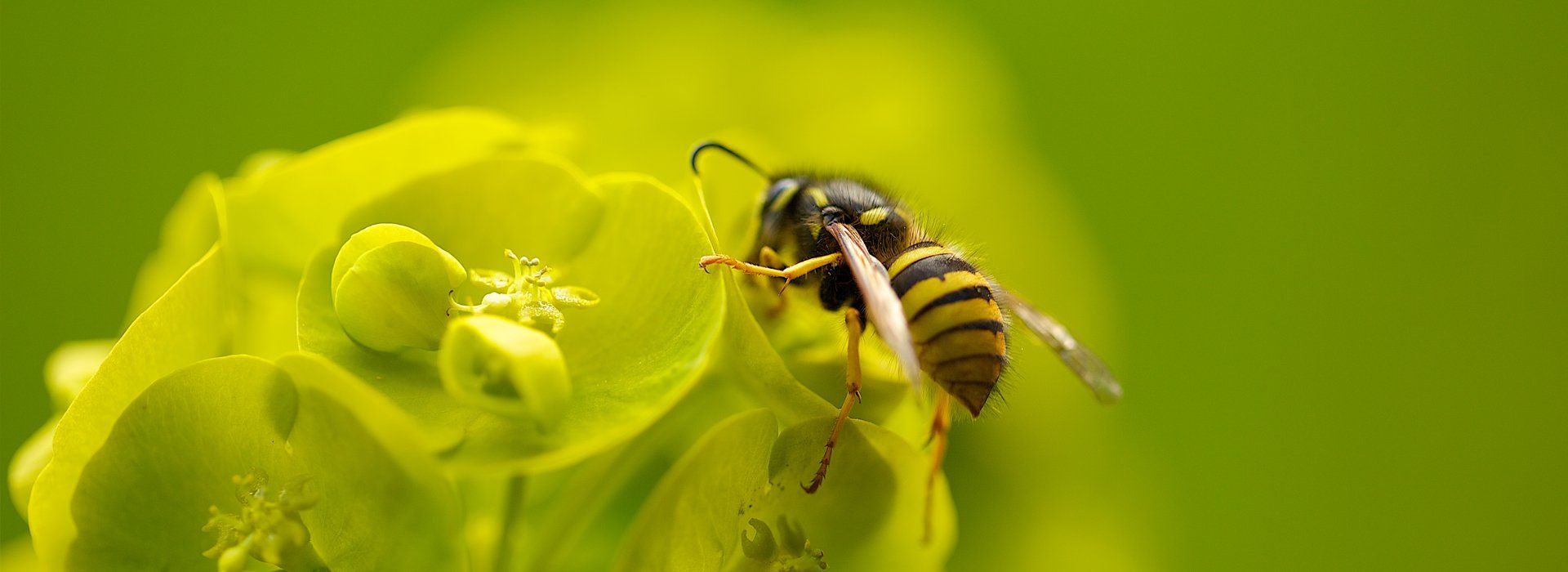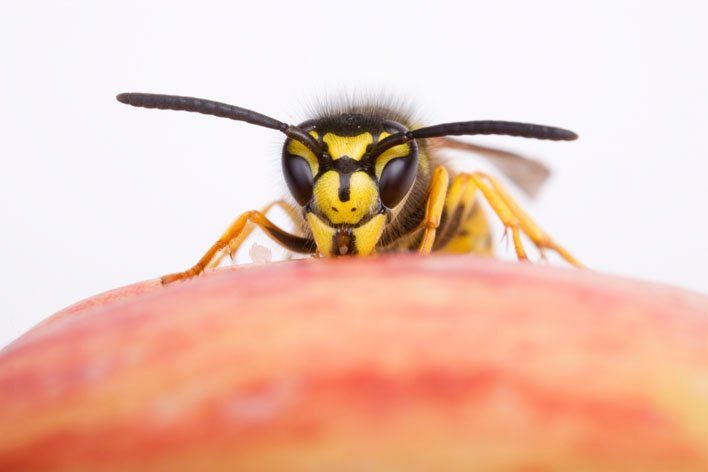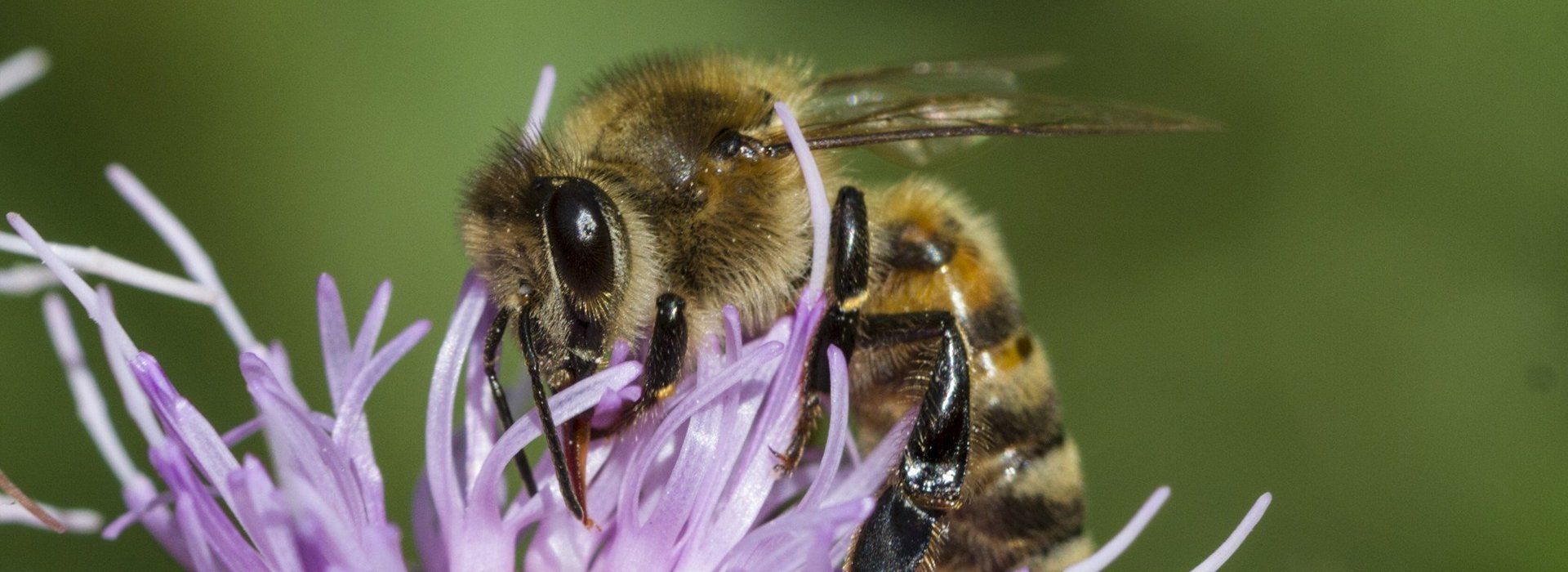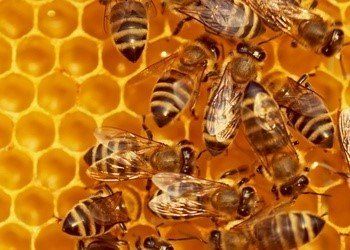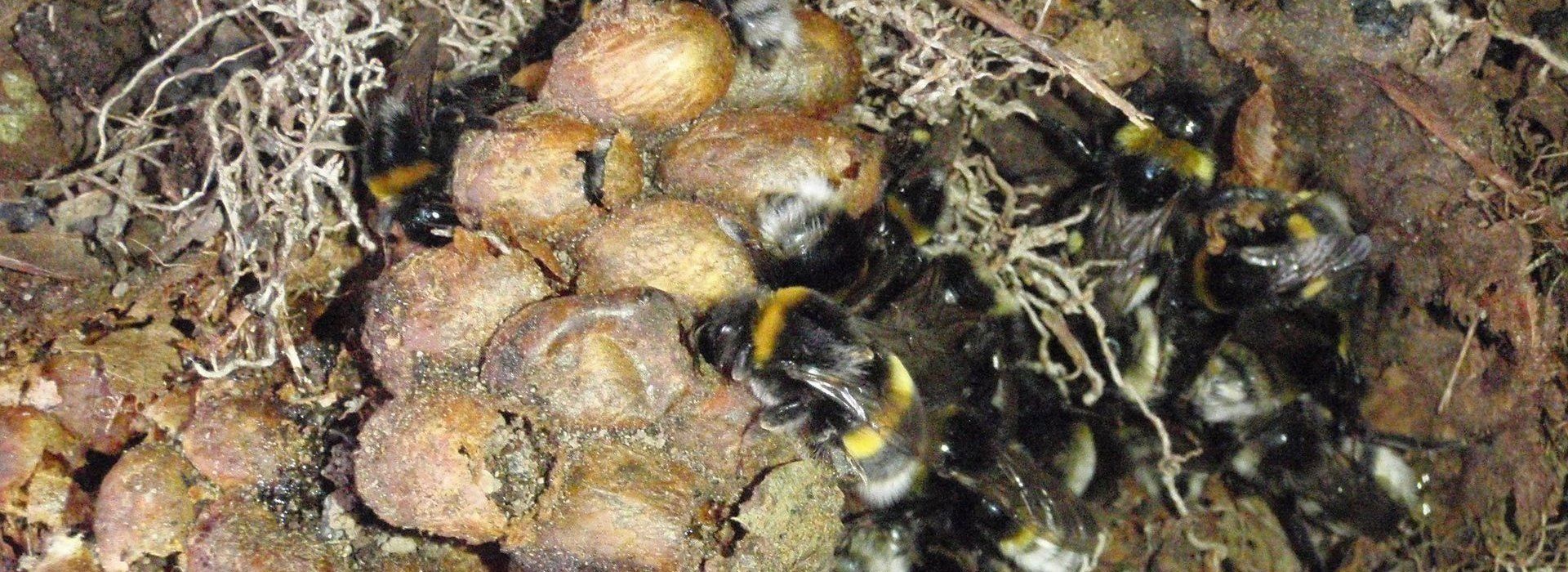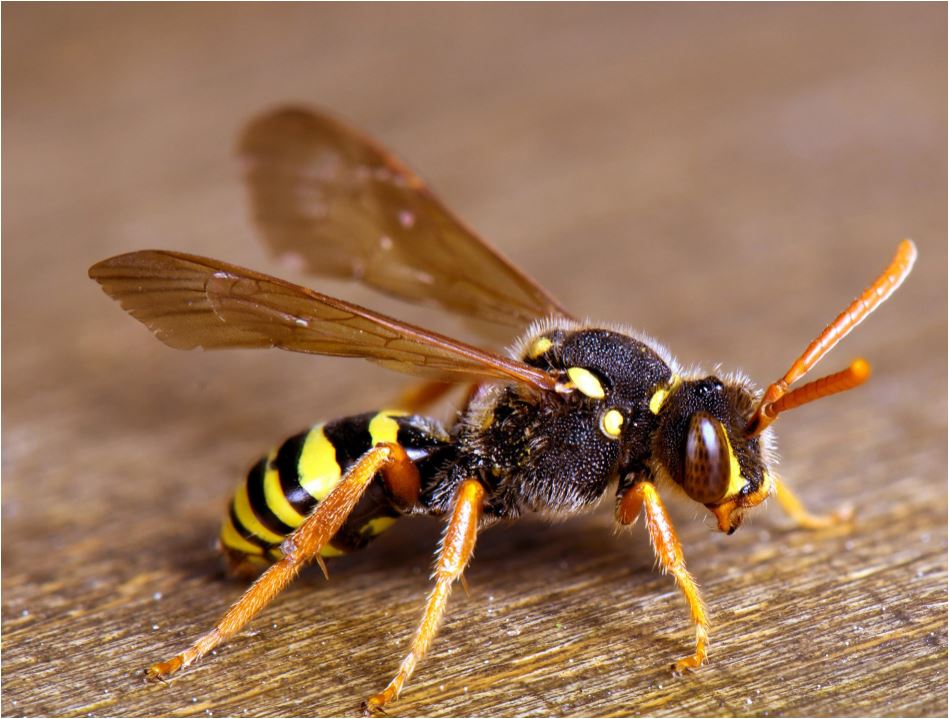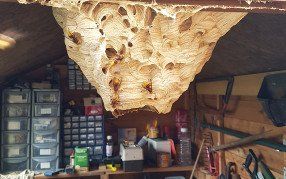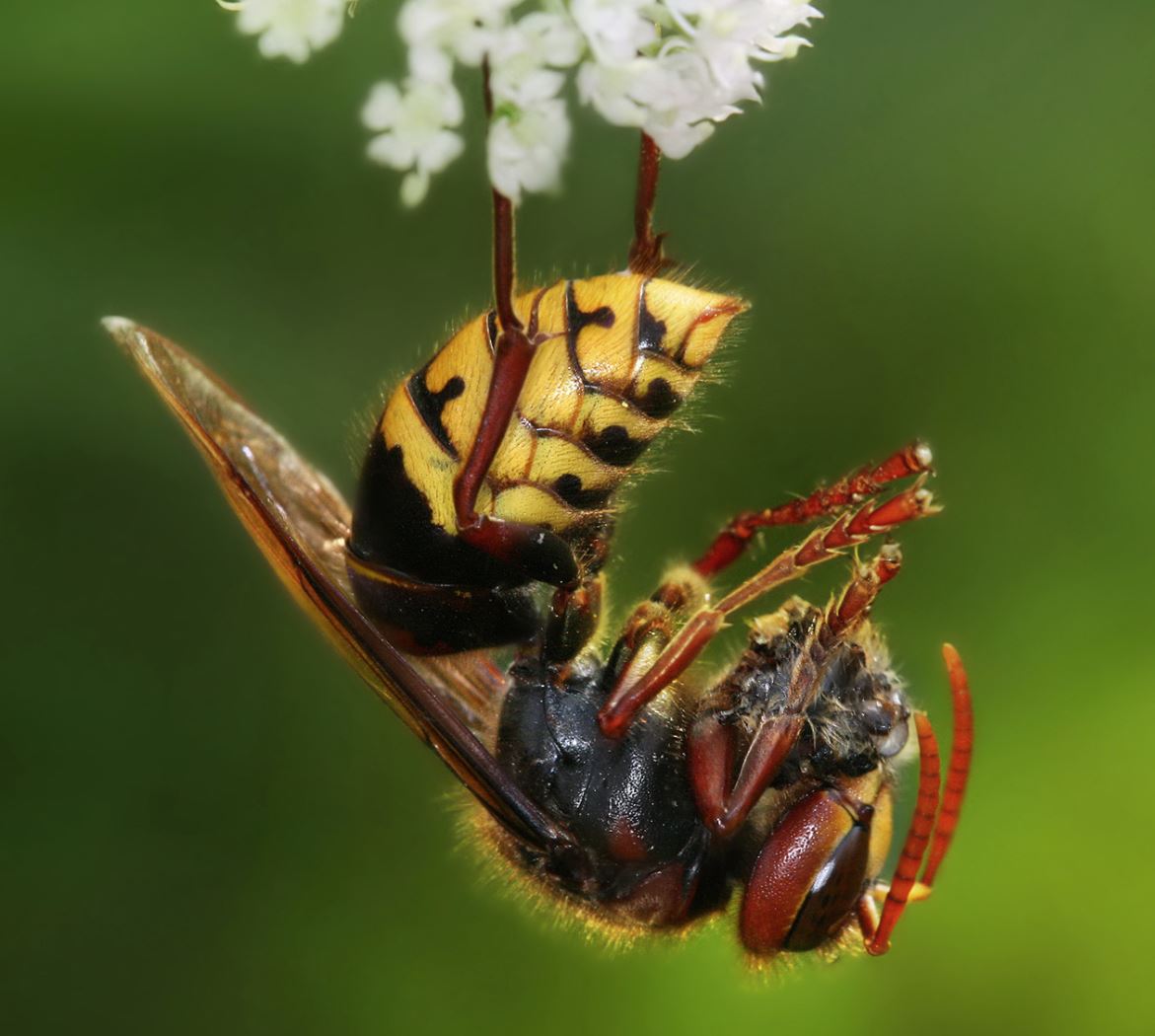The Fascinating World of Beehives
Most of us take insects for granted. They may be perceived as funny looking, icky and, for some, the looming buzzing sound can put you on high alert for aggressive wasps. But, if it’s a bee, take a moment to appreciate them.
Honeybees and bumblebees are some of the most amazing and fascinating creatures on the planets. With over 20,000 known species of bee on a global scale, around 270 species have been recorded in the UK alone and only one of these is the well-known honeybee.
The bee is more than just an insect. A universally recognised symbol, representing love, beauty and fertility, it is also recognised as a symbol of productivity and hard work, due to the insect’s genius and its incredibly tireless day to day life - to be as “busy as a bee” is a term widely coined in the UK.
But, why are bees so important to us and why are they so fascinating? Let’s explore the world of the bees and their beehives and why they’re so great.
Bees can thrive in both rural and natural or urban and domesticated environments and are very adaptable. However, they prefer to live in gardens, woodlands, meadows or other areas where flowers are abundant. With 20,000 known species, bees can be found on every continent around the world except, unsurprisingly, Antarctica.
In the natural world, a wild bee colony will usually build their nest inside tree cavities or under edges of areas, such as a cliff or under trees, to hide from predators. A beehive, on the other hand, is distinguished separately from a nest as a man-made structure constructed purposely for bees, which becomes a habitation for them and is usually dome or box-shaped.
Many people have built or bought beehives for their garden to provide the bees with a safe and protected home to go about their business and to promote pollination. Others, however, have taken on the hobby of keeping bees, known as a beekeeper or apiarist - someone who actively maintains the bee colonies and the man-made hives.
The practice of beekeeping dates back at least 4,500 years and is said to be the second oldest of professions. Even in Greek Mythology, the god of healing and medicine (along with music and poetry), Apollo, was credited as being the first beekeeper.
Honeybees produce honey from plant nectar, storing it in the cells of the hive or nest. They always produce too much honey than they need so beekeepers will only harvest and extract excess honey that the bees won’t need from the honeycombs, so as not to interfere with their hive structure and food source.
The social structure of a bee colony is a constant fascination with scientists and nature lovers around the world. In a nest or hive that houses a colony of bees, there are only three types of bees: the Queen, the worker bees and the drones. Each hive is made up of thousands of bees, depending on the size, which is why it’s so incredible that this social structure is ingrained in every bee that lives in a hive.
Each colony has only one queen and she’s, essentially, treated like a goddess. As the only sexually developed female in the hive, her primary function is to reproduce and mate with drones and she can produce up to 1,500 fertilised and unfertilised eggs during peak production. Her body is a lot longer than other bees with her wings only covering about two-thirds of the abdomen, and she doesn’t have any pollen baskets nor wax glands - she doesn’t need them. The quality of the colony depends largely on her egg-laying and chemical production, and her genetic makeup contributes to the quality, size and temperament of the colony. A Queen bee can live up to five years but usually lives between two and three years.
The male bees called drones are the largest bees in the colony, with a larger head, no stinger, pollen baskets or wax glands. Their main function is to fertilise the Queen during her mating flights but dies instantly after mating. Drones eat three times as much food as worker bees and an excessive number of drones can put pressure on a colony. With pollen and nectar sources becoming scarce in the winter, the drones are usually forced out of the hive and left to starve.
The majority of a colony is made up of worker bees and they usually outnumber drones by 100 to 1. As sexually undeveloped females, they cannot lay eggs. But they have brood food glands, scent glands, wax glands and pollen baskets meaning they perform all the labours of the hive. Each worker bee is assigned a different function within the hive:
●Feeding the brood
●Caring for the Queen
●Removing debris
●Handling incoming nectar
●Building beeswax combs
●Guarding the hive/nest entrance
●Cleaning the cells
●Cleaning other bees
●Collecting pollen and nectar
●Collecting water
●Disposing of bee corpses
So, what actually goes on behind hive walls? You’ve got thousands of bees, all with different jobs and structures, but how does it all work and operate?
● The inside - the interior structure of a hive is a heavily hexagonal shape, where the pattern of these is called cells. In a honeybee hive, these are called “honeycomb”. These cells store food such as pollen and honey.
● It’s function - as you may have guessed, the Queen bee is the leader of the hive and the worker bees are her followers. A typical day for worker bees will keep the hive and colony alive as they will go out to gather pollen and nectar from surrounding flowers. A hive’s primary functions are to produce the highest volume of honey possible, as well as keeping the queen alive and well so she can produce high quality and high volumes of bees to keep the colony alive.
● Swarming season - between early March to mid-July, the bee population can grow too large so swarming sites are created to avoid overpopulation or an unhappy queen. An old queen leaves the hive with a large group of worker bees and a new bee colony is formed with a new queen. This allows the existing structure to survive and allows it to function normally, continuing to produce honey along with the new one.
How bees are important to us, the environment and the eco-system
Bees are incredibly important to the environment and our eco-system for many reasons.
A bee’s role is to gather pollen from plants and, as the pollen catches on their bodies and they pass between plants, they fertilise them - this is, essentially, what pollination is. Although bees aren’t the only pollinators, bees will gather pollen to stock their nests and feed other bees which is different to other pollinators who simply look out for themselves such as flies, moths and some birds, bats and lizards. Because of this, bees fertilise and pollinate many more plants than other pollinators do.
Why is this pollination important? Well, it takes a lot more than the sun, soil and water to grow plants. With the fertilisation of plants from bees, more plants grow happily and healthily, which means more food for us humans. It is estimated that at least one-third of the food we consume relies on pollination by pollinators, particularly bees as some species can also pollinate plants that others can’t.
As well as food, bees play an important role in the fashion industry as they pollinate cotton crops. They also produce many other valuable resources such as beeswax which is used in cleaning and beauty products.
Back in 2008, the British Bee Keepers Association released an estimate that honeybees contribute £165 million to the British economy annually and was only predicted to rise by millions year on year. 10 years later, this figure has only risen and, potentially, the bees could be helping to contribute £400-£500 million to the UK economy.
Bees are crucial to our ecosystem then, so why then are we urged to help save the bees? It’s no secret that the bees are dying out thanks to our misuse of the planet. Thirty per cent of all bee colonies have disappeared over the last 30 years due to a lack of nature, the dying out of nature due to climate change, a growth in urban areas in response to the population rise and the improper use of pesticides.
So, how exactly can we help and protect the bees and sustain our environment? Here are a few things you can do:
● Plant more - allow your lawn and garden areas to thrive to attract the bees and support their hives and nests. Even Morgan Freeman has converted his 124-acre ranch into a bee sanctuary.
● Go organic - shop responsibly from local growers as the more you support sustainable and organic produce, the more you support the bees.
● Lay off the spray - avoid chemical sprays on your plants and research more natural, bee-friendly alternatives.
Beehive relocation , not extermination
As bees are becoming increasingly important, many companies who were previously bee exterminators and bee removal specialists are now altering their techniques and services. At Mr Wasp, we understand how a large beehive or nest can seriously affect your lifestyle. We work hard to relocate a beehive or nest, rather than exterminating them.
Mr Wasp - beehive removal and relocation services, and other pest removal services
At Mr Wasp, we are specialists in home pest control. Whether you’ve got a problem with bees, wasps or hornets in Cardiff, Bridgend or other surrounding areas in Wales, our experts can professionally and safely remove all pests from your property today. Contact us today to find out more.


